It was a bit of a scramble to get a seat. I was the civilian Chief of Staff of the UN-contracted Information Support Team, based in Mogadishu International Airport (MIA).
During my rounds of UN offices in the camp, I heard that a UN flight was going south to Kismayo International Airport the following morning, a matter of weeks after the town had finally been liberated by the Kenyan military from the clutches of al Shabab, Somalia’s al Qaeda aligned Islamic terrorist group.
On a personal level, I was keen to see Kismayo, a mythical place that I had studied from afar whilst working in the UK military and which had been Shabab’s last bastion in southern Somalia. I spoke to the senior UN logistics man in his air conditioned office in MIA; ‘I have to go so that I can cover the story for AMISOM.’
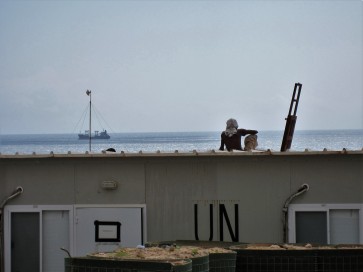
AMISOM – the African Union Mission in Somalia – was in need of as much positive news as we could muster. It was fairly self evident that the potential to bring this story to life through my pictures and words would be beneficial for AMISOM and the UN. And since I was working on a UN contract; the signs were good. He agreed with my logic and I was put down on the official document – the MOP – which contained a list of 12 names. With me were two other members of my team; both Somali journalists.
The flight left early the next day full of UN logistics experts, my team and the Deputy Commander of AMISOM. We were joining the Somali Defence Minister and the head of the Somali National Army in Kismayo, who were flying separately.
There were plans for a high level meeting between senior representatives of AMISOM, the Kenyan military, the head of the local Somali clan and Somali political and military leaders.

The tantalising prospect for me was the potential visit to Kismayo’s port, which had been under the control of al Shabab for over 8 years and had been the entry and exit point for the illegal trade in charcoal and all manner of other illicit trafficking. I was the only person on the flight with a camera; my brief was to record the events.
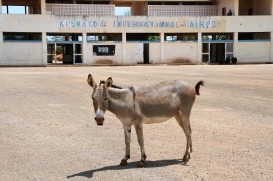
We arrived in the searing heat of southern Somalia, the international airport barely living up to its name with wildlife walking freely on the tarmac.
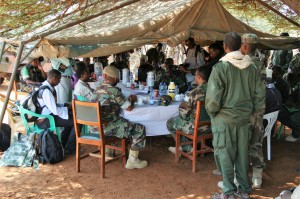
Once we were on the ground my military instinct to talk to the troops took over and I was able to establish a rapport with many of the members of the three different uniformed organisations present; the Ras Kamboni militia, the Kenyan Army and Somali National Army troops.
This enabled me to take photographs with more acceptance.
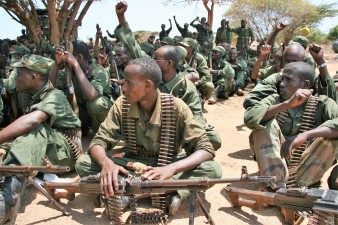
After the conclusion of the talks and a light lunch we mounted up into armoured vehicles and, in a long convoy, drove the 25 minutes into the town of Kismayo and on towards the port. Snaking along the only road to the airport, knowing how proficient al Shabab were with roadside bombs, was a concern, but we were spared any drama during our journey.
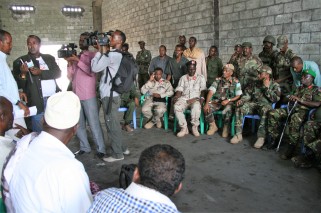
At the port there was one more set-piece meeting, between the senior Government and military figures and a group of Kismayo businessmen who were very unhappy about the charcoal ban that had been imposed on Somalia through the UN Security Council.
Denying al Shabab the income from the charcoal trade served two purposes; to limit the organisation’s funding and to protect the environment in Somalia. The ban was difficult to enforce, with ports in the Middle East encouraged to turn ships away. But in reality the charcoal was moving through Kismayo and other ports in southern Somalia onwards to destinations in the Middle East and there was little the ‘West’ could do about it. I had even been privy to conversations about possibly blockading Kismayo, but these fanciful notions were soon discarded.
In that port side hanger, it was the first opportunity that these businessmen had been given to air their grievances on the issue; sitting at the comfort of my desk in the MOD in London I had supported this initiative to deny al Shabab a source of income without understanding any of the local concerns associated with the decision.
It proved to be a perfect example of seeing an issue from a very different perspective.
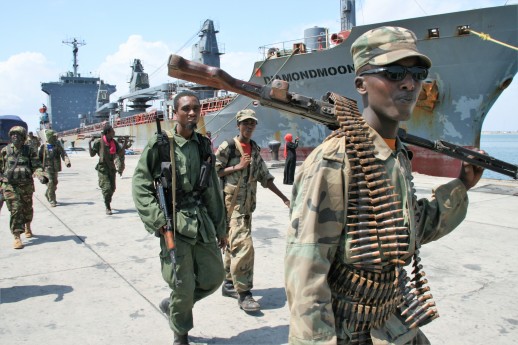
Once we had conducted a walking tour of the port I grabbed a lift with a Kenyan armoured vehicle, this time travelling in the hatch at the front which gave me a great view of the journey back to the airport. We passed through rudimentary security check points and I saw the town of Kismayo, it’s wide unpaved roads hazy with dust and small groups of locals going about their business, no doubt relieved that the extremists had been ejected from their town.
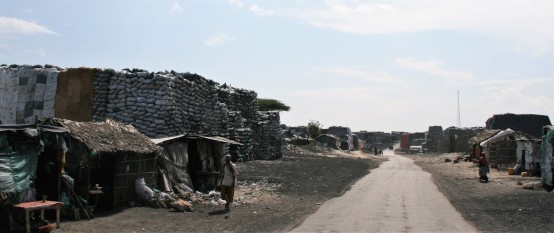
We returned through huge stockpiles of charcoal lining the road as we headed back to the airport. No wonder the businessmen were unhappy.

At the airport there was time for one final group photo accompanied by plenty of promises of closer cooperation.
After a few short hours in Kismayo, a place I never thought I would ever visit, I was back in the aircraft with my team. With no sign of the donkey to hold us up we were soon taking off, leaving behind the Kenyan liberators of Kismayo, their problems only just beginning within the complex clan based society of the Jubaland region of southern Somalia.
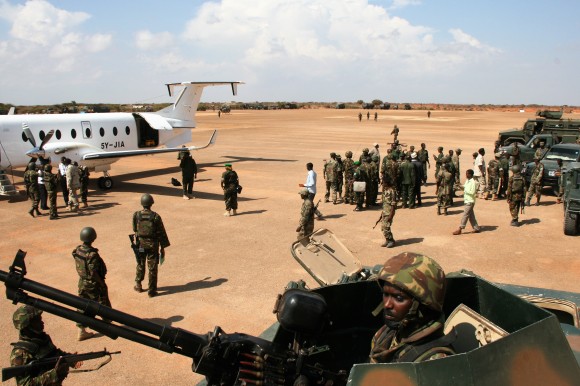
All images ©️Ade Clewlow